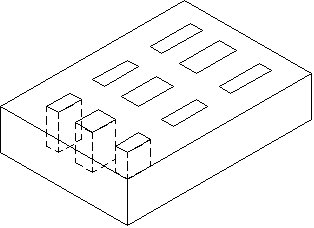
This is a Japanese woodworking lecture that I wrote in a Japanese network several years ago. Now I try to translate it to English version, though I am not well in English. I hope you to enjoy this lecture.
I am not a professional woodworker, but I aim professional level woodworking in this lecture. In Japan, woodworking technique is often hidden in a brain of specialist, but I will write everything as possible as I can. At first I write about choosing hand tools and sharpening.
Woodworking is sometimes very dangerous. Safety is your duty.
1997,Ryohei Miyamoto. All rights reserved.
1,Basic tools
It is not good to buy many tools at once. You should purchase
tools when you need them. At the start, you need one set of sharpening
stone, few metal ruler, 15mm chisel, and 48mm hand plane. It is
very important where you buy tools in Japan. You should buy tools
at a shop for professional wood worker or carpenter.
Table 1: List of Japanese basic woodworking tools.
| name | size | price(yen) | description | need |
| chisel | 3mm | over3000 | for narrow mortise | * |
| chisel | 9mm | over3000 | for middle size mortise | ** |
| chisel | 15mm | over3000 | for middle size mortise | ** |
| chisel | 30mm | over4000 | surfacing or wide mortise | * |
| chisel | 6mm | over3000 | useful for narrow mortise | * |
| plane | 48mm | over8000 | basic plane, all purpose | *** |
| plane | 54mm | over10000 | finish plane | * |
| Ryoba saw | 3000 | replace blade | *** | |
| Dozuki saw | 4000 | replace blade | * | |
| sharpening stone | 2000 | middle grid | ** | |
| finish sharpening stone | 4000 | #6000 ceramic stone | ** | |
| iron plate | 2000 | for flattening blade's back | ** | |
| silicon carbide | 500 | for flattening blade's back | ** | |
| square | 15cm | 1000 | always use | *** |
| sashigane | 50cm | 1500 | Japanese big thin square | ** |
| rule | 15cm | 200 | usually use | ** |
| rule | 30cm | 700 | for checking flatness of plane base | * |
| rule | 1m | 2000 | for checking flatness of board | * |
| marking gage | 1500 | for mortise and tenon | ** | |
Though there is not many books on Japanese woodworking, I recommend three books.
Zukai Mokkou gijyutsu, Syougoro Sato, Kyoritsu pub.
This book is not new, but it is all purpose.
KAKI's woodworking, Makoto Kakitani, JICC pub.
KAKI is a famous handmade furniture maker in Toyama. This book
is sometimes called as Bible of woodworking.
Mokkougu shiyouhou, Yoshio Akioka, Sougensya
It is difficult to learn sharpening plane blade or adjusting,
so you had better to be taught by carpenter or woodworker. Or
please be checked by them.
Flattening the blade back
Japanese blade has two layer, soft and hard. It is very important that hard blade back is perfect flat. Making this flatness is called Uradashi.
I use iron plate and silicon carbide to flatten the blade back. It is almost impossible to describe this work. You need to make the blade back to be mirror. It is hard to do so. When I did at first, I could not finish to flatten the blade back like a mirror in a day.
Some tips:
Flattness of the surface of water stone is very important. You must reflatten to keep the surface of water stone. There are several way to flatten.
I usually use two or three methods. For example, 1 and 3.
The next figure is a sample of exercise. When you finish nine mortises, your skill become higher level.
This wood block size is about 5cm x 10cm x 15cm(HxWxL). Use sguare and marking gauge to mark.


A:V-shape method,
At first stand the chisel at the center of mortise, and excavate from both side. Be carefull to keep the chisel at inside of the mark line(about 1mm inside).
B:M-shape method,
At first stand the chisel at the both inside of the line, and make from center.
If you can not excavate the bottom, stand chisel and hit the inside area of mortise. When you almost finish the mortise, stand chisel just on line, and make mortise completely.
(continue)